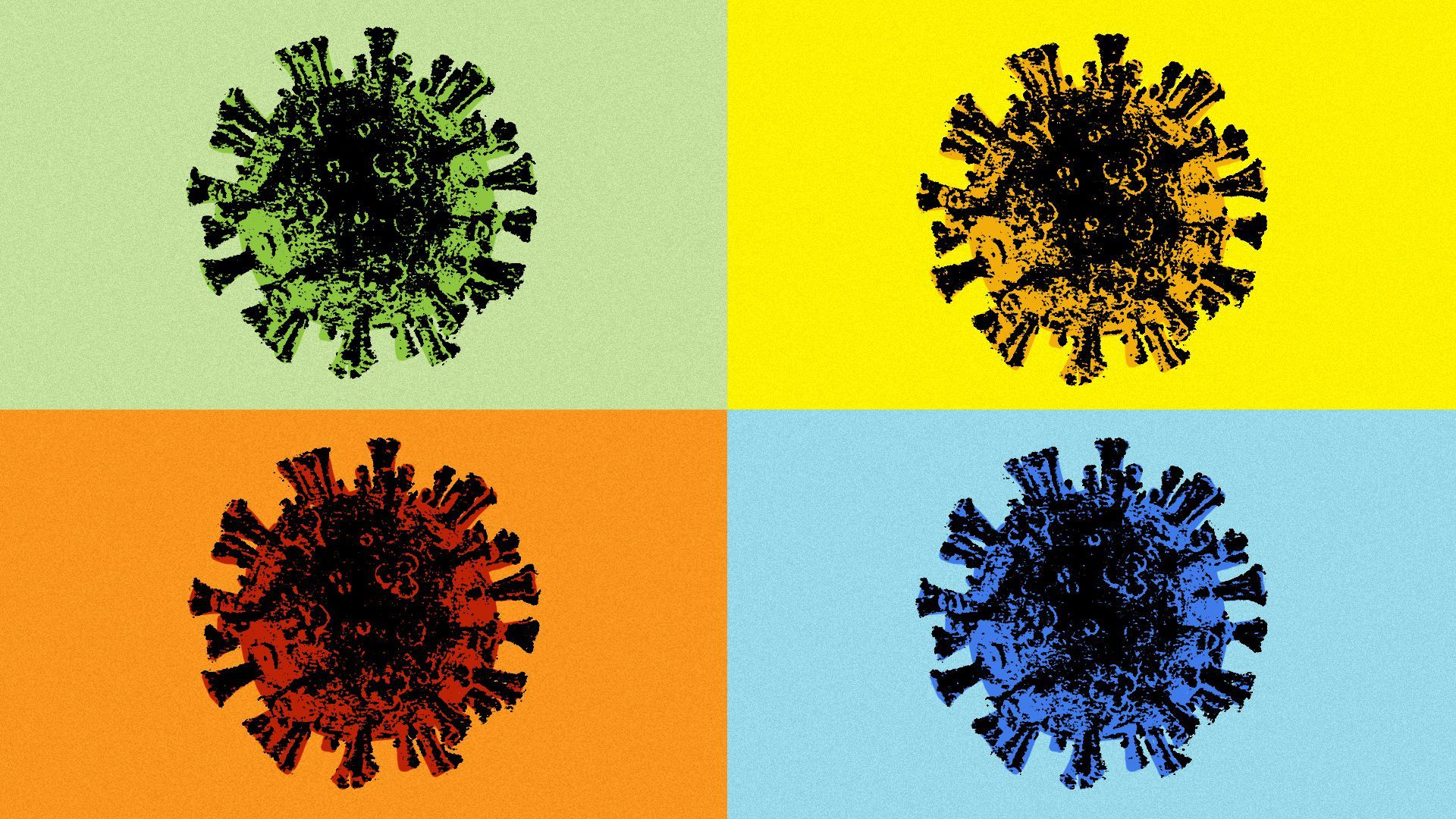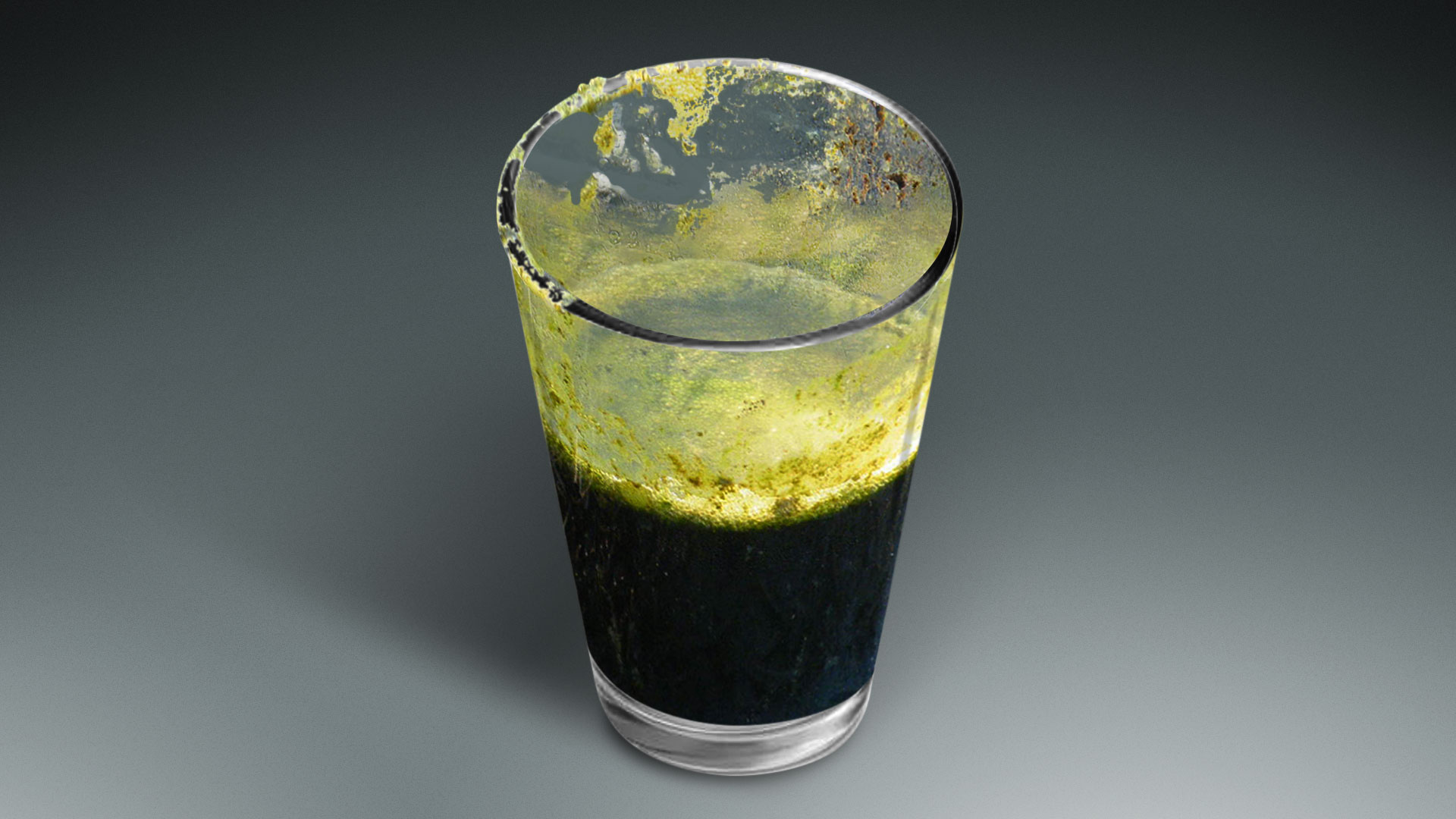| | | | | | | Presented By OurCrowd | | | | Axios Science | | By Alison Snyder ·Jan 07, 2021 | | Welcome back. This week, NIAID director Anthony Fauci talks with Eileen about the pandemic in 2021, we catch up on COVID-19 news and more in 1,640 words, a 6-minute read. | | | | | | 1 big thing: The pandemic in 2021 |  | | | Photo Illustration: Eniola Odetunde/Axios. Photos: The Washington Post, Pool/Getty Images | | | | Despite the slow roll out of vaccines so far, NIAID director Anthony Fauci says the COVID-19 vaccination campaign will ramp up fast enough that Americans should see "a degree of normality in the fall." Driving the news: President-elect Biden is planning a program that will have "much more interaction between the federal government and the states than there are right now" in order to reach his goal of 1 million vaccines a day for 100 days, Fauci tells Axios' Eileen Drage O'Reilly. What's happening: Millions of available vaccine doses haven't been administered, raising questions about what went wrong with Operation Warp Speed. - Americans are "paying the consequences" of having a "program being run like a supply distribution program and not a vaccination program," says Carlos del Rio, distinguished professor of medicine at Emory University School of Medicine.
- "Our approach in which public health is run by the states doesn't work in a pandemic. You cannot respond to a pandemic with 50 different plans," del Rio says.
- The U.S. needs to coordinate state sites and enough staffing to give people the shots, as well as logistics like freezer requirements, del Rio points out.
Yes, but: Fauci says he expects changes under the new administration and asks if it's "fair" to say there's a bottleneck in vaccinations, or if it's more about experiencing normal "bumps and hiccups" for a massive program launched during the holidays. - This week, the inoculation rate went up to half a million doses a day, he points out.
- "Are we going to clear the bottleneck in a couple of weeks? I hope so. Are we going to get to 1 million a day in a couple of weeks? I doubt it. But I think by the time President-elect Biden gets in, he hopes to be able to have a system going that he can get 1 million a day for the first 100 days," Fauci says.
The problem right now in the U.S. is not lack of supply. But that may become an issue once the vaccination program ramps up and as urgency grows under the pressure of more transmissible variants that the CDC is monitoring closely. (Read more below.) - Some nations are considering stretching out doses, giving people half doses or allowing a mix of vaccines — the latter is an option Fauci strongly opposes.
- NIH is running a study to see how effective Moderna's vaccine is if the dose is halved.
What to watch: Public health scientists hope pandemic preparedness will become a top national priority. - "The first lesson learned is that pandemic preparedness is worth the investment," says Tara Kirk Sell, senior scholar at Johns Hopkins Center for Health Security.
- Better diagnostics will be key to fighting future outbreaks, Sell says. Rapid antigen tests and other measures "can really change the game."
For now, though, Fauci says if herd immunity can be achieved by vaccinating 70%–85% of people by the end of this summer, "I think we'll start approaching a degree of normality in the fall and the winter, such that by this time next year, 2022, we will be very close to a return to normal." Go deeper: Fauci sees greater China role in COVID-19 spread, one year on |     | | | | | | 2. Variants and vaccines |  | | | Illustration: Aïda Amer/Axios | | | | The COVID-19 variants first detected in the U.K. and South Africa and now circulating globally aren't a current threat to the effectiveness of the first vaccines, but mutations will be closely monitored because "they could be an issue," Fauci tells Eileen. The big picture: While there are some concerns the mutations might circumvent the vaccines, he says they pose more of a problem for certain treatments than for vaccines. What's happening: Viruses mutate frequently, but often those changes are small and don't cause issues with treatments or vaccines. Public health officials have been tracking SARS-CoV-2 variants closely. B.1.1.7 doesn't appear to be more virulent or to obviate the effect of the vaccine, based on what British doctors are saying, Fauci says. - B.1.1.7 is more transmissible because it binds more readily to the ACE2 receptor, which is how the virus enters cells.
- That pushes the need for faster vaccinations, says del Rio.
- "If the R-naught goes from 2.5 to 2.9 in a totally naive population, after 10 cycles of transmission, instead of 9,000 people infected, you have 42,000 people infected," del Rio warns.
The 501.V2 variant is "a little bit more concerning regarding the possibility of interfering with some of the monoclonal antibodies," based on preliminary findings, Fauci says. - Monoclonal antibody treatments precisely target one specific region of the virus and "if the mutation happens to be at that epitope, that could obviate the effect" of the treatment, he says.
- Vaccines, on the other hand, "induce a polyclonal response against multiple different aspects of the spike protein," Fauci points out. "For something to really circumvent the efficacy of the vaccine, it's got to have a lot of mutations that are all at the right places."
What they're watching: Scientists are following the strains and testing them against the vaccines. - "If it doesn't impact the vaccine, you're good to go. If it does, you have to make some minor modifications of the vaccine to be able to circumvent the changes that occur in the mutations," Fauci says.
- With the "plug-and-play" nature of the mRNA vaccines, it is much easier to alter the makeup of those vaccines, he adds.
|     | | | | | | 3. Catch up quick on COVID-19 |  "More than 130,000 Americans are in the hospital today with COVID-19 infections," Axios' Sam Baker and Andrew Witherspoon report. - "That's straining several states' health care systems and will keep pushing the virus' death toll higher and higher."
Convalescent plasma can help decrease the risk of severe COVID-19 in older patients if it is given within the first three days of the onset of symptoms, according to a small clinical trial, Katherine Wu reports in the NYT. More than half of COVID-19 cases are transmitted via people without symptoms, The Washington Post's Ben Guarino reports. Immunity to SARS-CoV-2 persisted eight months after infection in the majority of people in a study published Wednesday in Science. - Why it matters: It suggests the immune system's memory — trained through initial infection or immunization — can provide "durable immunity" against reinfection with the virus.
China approved a vaccine by state-owned Sinopharm, another Chinese vaccine was reported to have a 78% efficacy rate, and the EU greenlighted Moderna's vaccine. |     | | | | | | A message from OurCrowd | | Proven tech could save governments billions treating drinking water | | |  | | | | Toxic algae blooms are poisoning water supplies globally. BlueGreen Water Technologies treats toxic algae fast, effectively and at scale. Proven across five continents, BlueGreen could save billions. Now, you can invest. Explore BlueGreen's ability to save our drinking water. | | | | | | 4. Analysis: Gender bias isn't source of gap in scientific publishing |  | | | Illustration: Aïda Amer/Axios | | | | The gender gap in papers published by female scientists isn't rooted in bias in the peer review process, according to a study published this week. The big picture: There are fewer female than male scientists in many fields and they submit fewer papers, a trend exacerbated during the pandemic, possibly due to its disproportionate pressures on women. What they did: Flaminio Squazzoni, a sociologist at the University of Milan, and colleagues analyzed submission data for about 350,000 papers in different fields of research by 1.7 million authors in 145 journals. - They focused on three possible sources of bias: the selection of referees, their recommendations and editorial decisions to accept the papers for publication.
- The researchers found female scientists submitted fewer papers, but those papers with female authors "were treated even more favorably by referees and editors," they report in Science Advances.
But, but, but: "Our findings do not say that there's no discrimination [against women] in academia, or that women are treated positively by academia," Squazzoni told The Scientist's Jef Akst. - "And I continue to believe that probably one of the possible explanations of that fact that women submit fewer manuscripts is probably they are exposed to discriminatory practices and obstacles during their career."
What's next: "Increasing gender diversity in editorial teams and referee pools could help journals inform potential authors about their attention to these factors and so stimulate participation by women," the researchers write. |     | | | | | | 5. Worthy of your time |  | | | Illustration: Aïda Amer/Axios | | | | The hunt for alien life heats up in 2021 (Miriam Kramer — Axios) A new idea about how dogs were domesticated (The Economist) Some identical twins don't have identical DNA (Tina Hesman Saey — Science News) CRISPR cures rapid aging disease, progeria, in mice (Sharon Begley — STAT News) |     | | | | | | 6. Something wondrous |  | | | Nearly 10,000 galaxies seen in one part of the sky by the Hubble Space Telescope. Photo: NASA/ESA/STScI | | | | The universe is 13.77 billion years old, according to a new measurement taken using a powerful telescope in Chile, Axios' Miriam Kramer reports. Why it matters: The precise age of the universe is an important factor for scientists trying to understand the evolution and expansion of the cosmos. What they found: The Atacama Cosmology Telescope made the measurement by looking at fluctuations in the Cosmic Microwave Background (CMB), the glow left behind after the Big Bang formed the universe. - Researchers used the telescope to effectively create a triangle in the sky, measuring distances between the Earth and two points of interest in the CMB and then extrapolating the distance between the two points.
- Because the universe is expanding, measuring distances gives scientists a sense of how quickly that change is occurring and therefore the age of the universe.
- The new research is detailed in a study published in the Journal of Cosmology and Astroparticle Physics.
The big picture: Scientists have been mired in a debate about how fast the universe is actually expanding — a number known as the Hubble Constant. - Dating the universe to 13.77 billion years is in line with the age of the universe previously estimated using data from the Planck satellite, but other methods that measure the distances between stars have dated the universe as significantly younger.
What's next: Scientists are continuing to gather data and double-check their analyses in an attempt to resolve the Hubble Constant conflict. - "The growing tension between these distant versus local measurements of the Hubble constant suggests that we may be on the verge of a new discovery in cosmology that could change our understanding of how the Universe works," Michael Niemack, an author of the study said in a statement.
|     | | | | | | A message from OurCrowd | | BlueGreen's innovative WaterTech could prevent global disaster | | |  | | | | Toxic algae blooms are expanding rapidly, poisoning our drinking water and causing billions of dollars in damage. BlueGreen Water Technologies has been proven in reservoirs, lakes and rivers all over the world to eliminate toxic algae. Invest early as BlueGreen helps save our drinking water. | | | | | | Axios thanks our partners for supporting our newsletters.
Sponsorship has no influence on editorial content. Axios, 3100 Clarendon Blvd, Suite 1300, Arlington VA 22201 | | | You received this email because you signed up for newsletters from Axios.
Change your preferences or unsubscribe here. | | | Was this email forwarded to you?
Sign up now to get Axios in your inbox. | | | | Follow Axios on social media:    | | | | | |










No comments:
Post a Comment